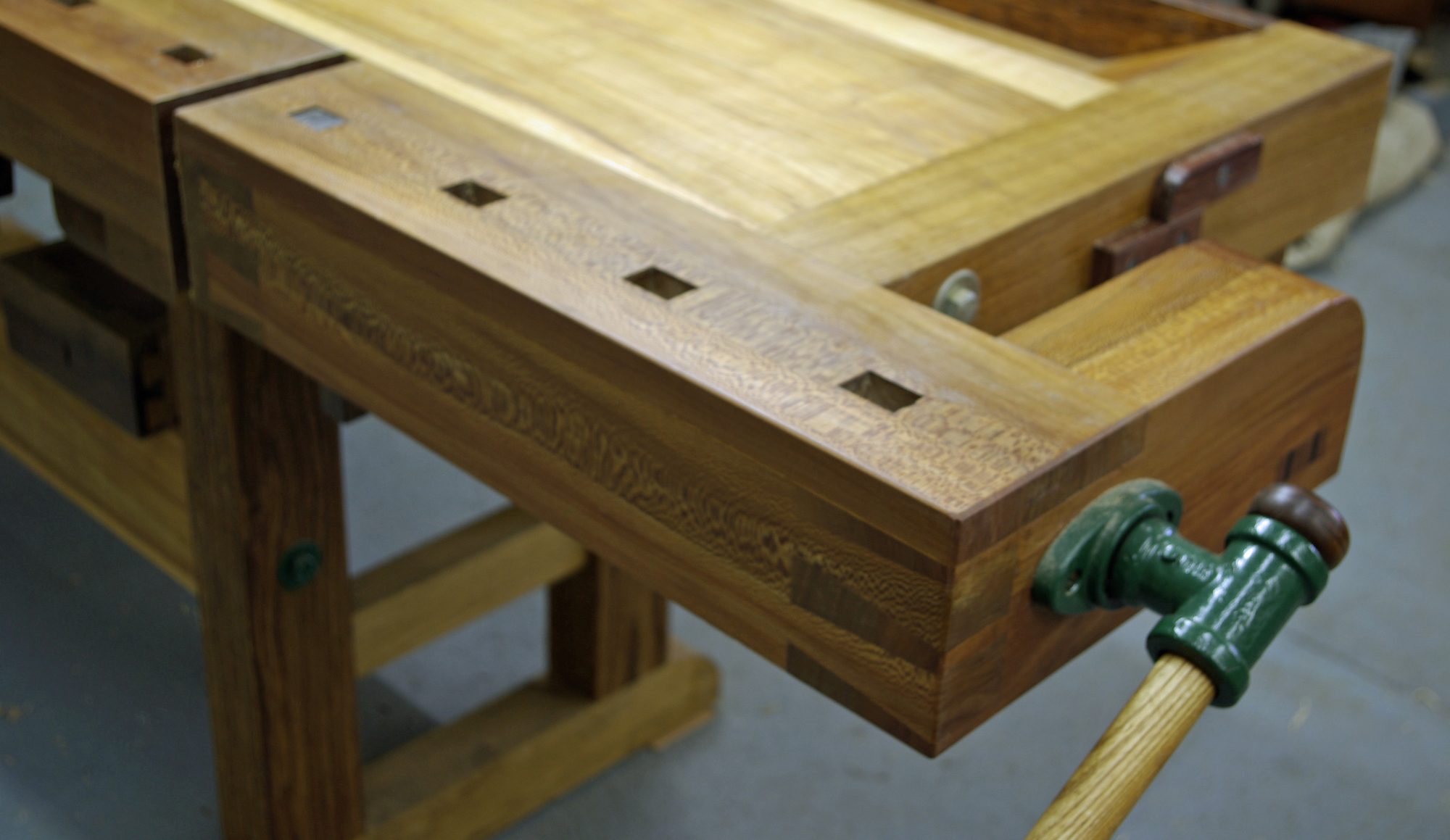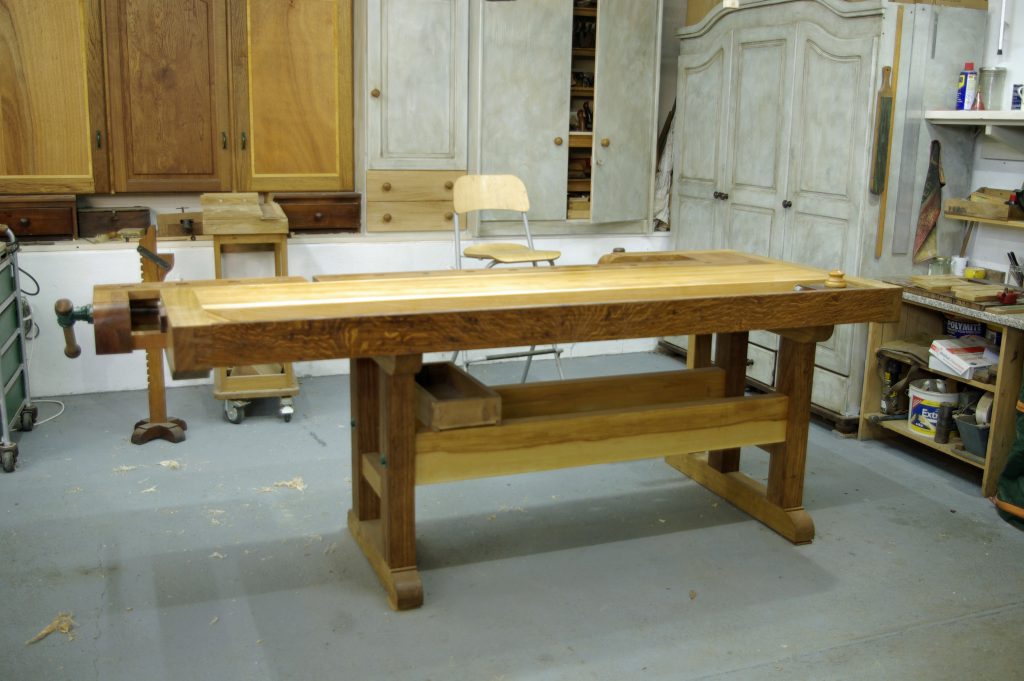
For anyone who is serious about making furniture, a decent cabinet makers bench becomes the single most important tool they have in their workshop. Because without a workbench, the full potential of any other tool will fail to be realised. The ensuing struggle can turn the workshop into a war zone, rather than a quiet creative sanctuary where good things happen. While the best bench for furniture making will always be a dedicated cabinetmakers workbench, time, space and budget may dictate other choices. Your trade, hobby, project size may also suggest a different workbench choice. However they will all share key features. Workbenches can be simple affairs or really sophisticated works of art, it doesn’t really matter, just as long as they are sturdy, solid and heavy and posses a means of firmly holding and securing the work piece.
That said, I thought I would talk about my latest cabinet makers bench, a style I’ve long preferred and which has been perfected over the centuries in northern Europe. Often known these days as the Frank Klaus bench, because Frank has done a lot to popularise the style. Frank’s bench was featured in The Workbench Book by Scott Landis. Which by the way is a great resource if you want to build a cabinetmakers bench like this yourself. It has thorough explanation of construction details and dimensioned plans. Originally, this style bench evolved slowly as each generation of craftsmen has added something, changed a detail, or perhaps pared away something unnecessary, until what is pretty much the perfect design emerged. It does have its critics, but I generally find they are woodworkers who don’t work in a traditional way with hand tools. This is not a criticism of them, woodworking is after all a rich and varied craft, with room for all approaches.
Enough preamble, so I’ll get on with my story. Or should I first say, backstory. It all began with what is now my second bench in this style. The first bench was made by someone early in the twentieth century, it came my way after I saw an ad. From the photo I could see it was in a disheveled state but unlike so many I had seen, it was still sound. So off we set on a four hour journey to a small town near the Swiss/French boarder. Shortly after arrival and a bit of friendly bartering this vintage cabinet makers bench was mine for a few hundred euros. Even in its neglected condition it was still a bargain. A new bench like this today, if you could ever find one, would cost in the region of € 5000. I wouldn’t like to put a value on my new bench, but I will tell you it took me 7 weeks to make from an imposing pile of Timber.
The old bench has served me well over many years, but there were just a few tiny niggles, not even that really. Just thoughts now and then , like that if I was making this bench now, I would do this or that differently. So about seventeen years ago I went to talk with Fabrice in my local wood yard. Told him what I wanted to do, that I wanted to depart from the traditional bench timber, Beech. (Beech is hard, heavy and relatively cheap in Europe) I was looking for something with the same qualities, but more visually stimulating. Fabrice rubbed his chin for a few moments as he often does when confronted with my requests. Suddenly his face brightened, then saying “follow me” disappeared into one of his woodsheds. About two hours later I was stacking 100 mm (4 inch) planks of European Plane, Ash and old brown and white Oak at the back of my workshop. That’s where it stayed for the next seventeen years.
So fast forward to spring 2019, when I was recovering from an illness that has a depressingly small survivors club. Work was slow after having turned away clients over the preceding four years. So there I was cleaning up the workshop with my head full of the projects that I’d been dreaming about while out of action. When I stumbled over the bench mountain. I’d been bumping into it for years and moved it a couple of times without improvement. What made matters worse it had started to grow as the result of some strange magnetic quality that attracted every scrap of wood that might prove useful in the future; you know, those bits that are somehow too large to put in the stove, but too small for the timber rack. Looking at this pile I realised it had to be this year, right now I had the time and if I missed this chance it would never happen. Procrastinator! Is the rock often thrown at people who put off doing what they should have done sooner. Well I will say in defense of all procrastinators everywhere, there’s a good chance we are better prepared than our less tardy colleagues. Having had the luxury of seventeen years reflection, I had made the bench ten times over in my mind. So the actual making went quite smoothly. The timber as it stepped forward from the plank with its rich figuration suggested its own placement. However because of its stability and relatively small movement I kept the European Plane for the front and vices.
While standing at my older cabinet makers bench I have often thought of the man who made it and of the lives of those who have worked at it before me. Now standing at this bench I’ve made, I think of those who may follow me and the things they might make, and hope my bench will serve them well. With a similar sentiment I’m posting the following in the hope that these photos and notes will help anyone wishing to make their own bench.
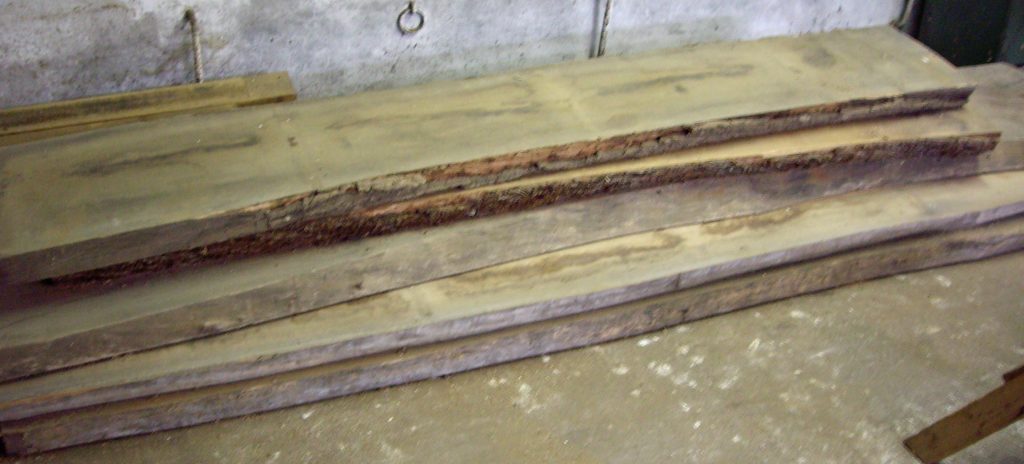
That Pile 
Dimensioning the planks 
Front View of Base 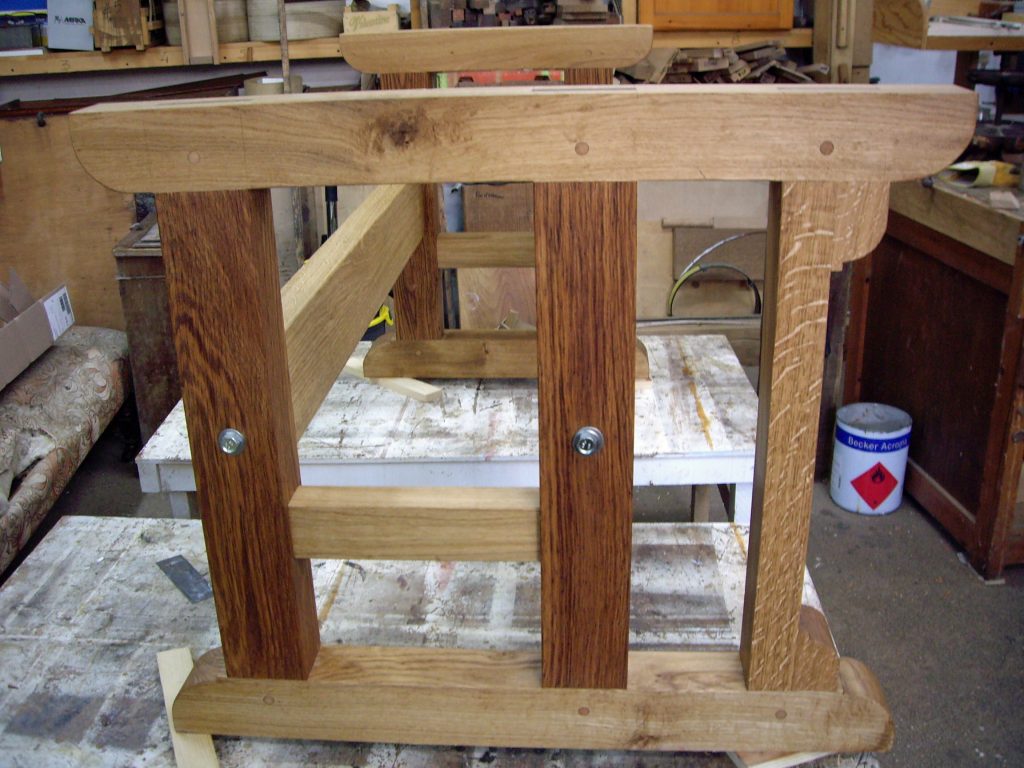
Assembled Base End View 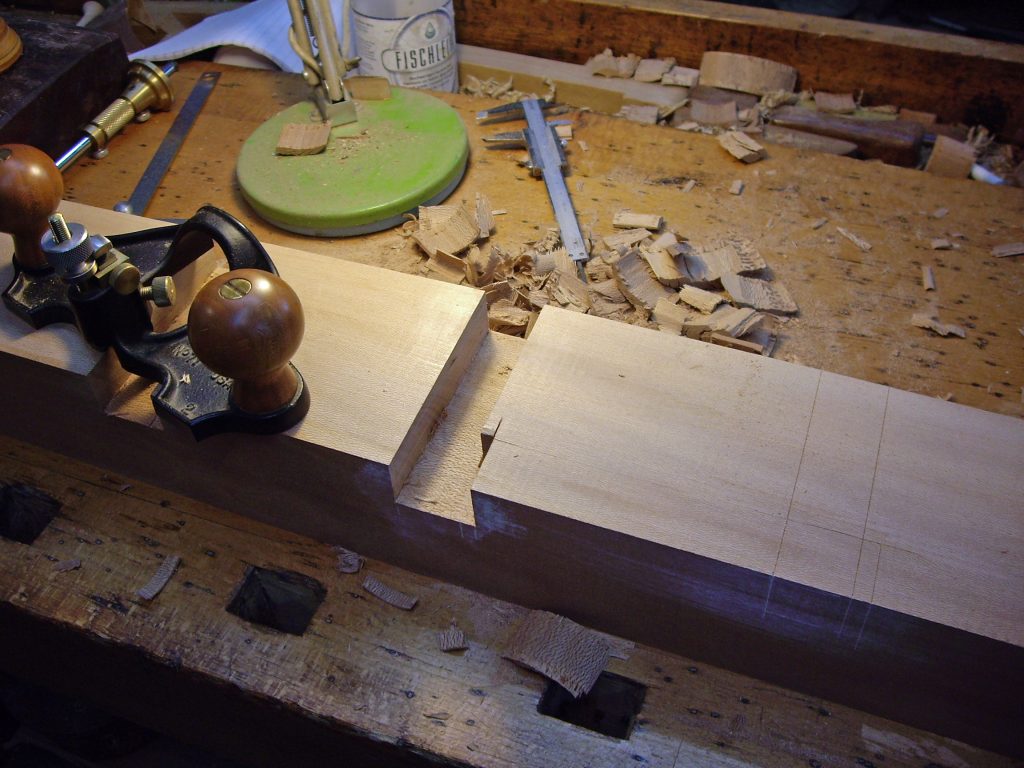
Cleaning Out Dog Holes 
Taking Slots to Depth with Hand Router 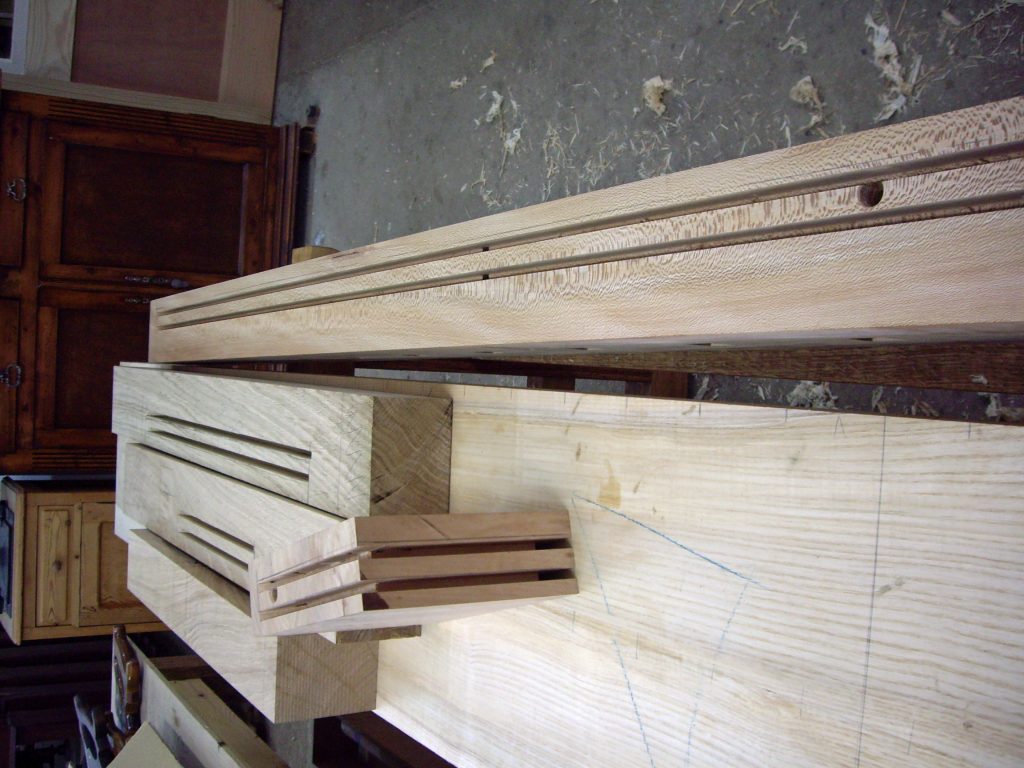
Components Grooved to take Double Loose Tenons 
Body and Front Strip Ready to be Glued/Tenoned and Clamped 
Hand Sawing Dog Hole Slots 
Chopping Out Dovetails on End caps 
Sawing Dovetails 
More Dovetails 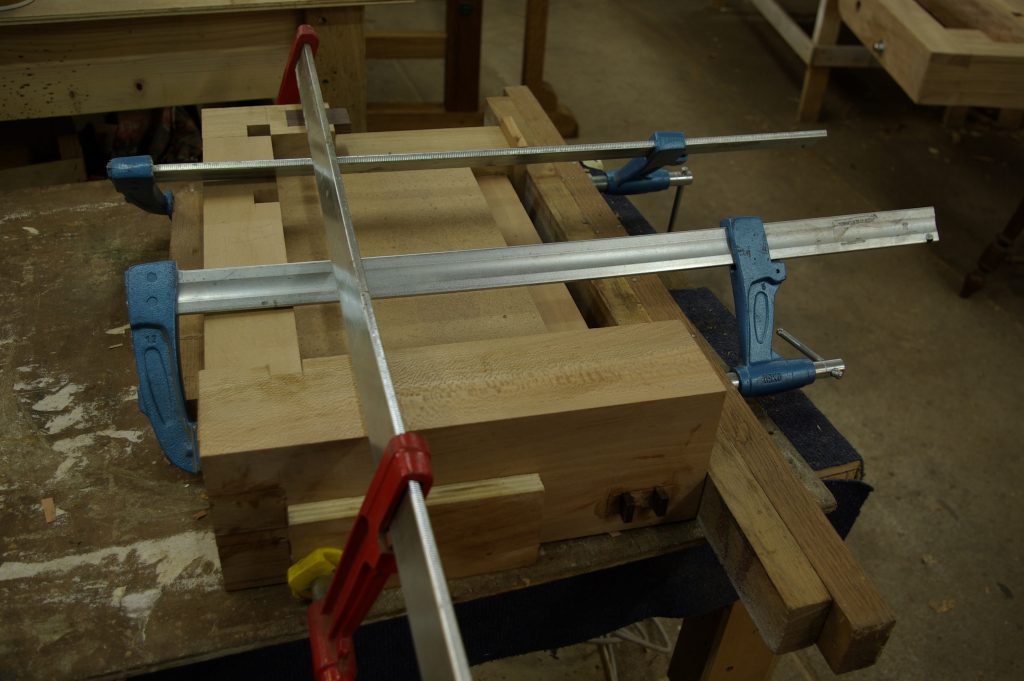
Glue Up Tail Vice 
Fitting Tail Vice 
Planing Bench Top 
Finished Front shoulder Vice 
Finished Tail Vice 
Finished Bench Tail View 
A Traditional European Cabinet Makers Bench

